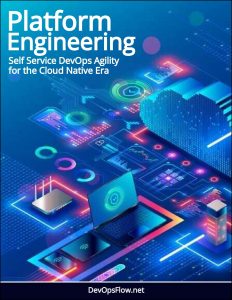Building a Platform Framework: Implementing Multi-Cluster Kubernetes
Developing a multi-cluster Kubernetes Operator, such as Kratix, offers valuable lessons for building robust platform frameworks.
 A multi-cluster Kubernetes Operator serves as the backbone for building internal developer platforms (IDPs), a cornerstone of Platform Engineering.
A multi-cluster Kubernetes Operator serves as the backbone for building internal developer platforms (IDPs), a cornerstone of Platform Engineering.
By automating lifecycle management tasks—such as provisioning, scaling, and updating applications across multiple clusters—it abstracts the complexity of Kubernetes, enabling platform teams to deliver standardized, self-service environments.
The development of a multi-cluster Kubernetes Operator, like Kratix, is deeply intertwined with Platform Engineering best practices, as it provides a structured approach to managing complex, distributed systems while enhancing developer productivity, operational efficiency, and organizational scalability.
Featured Experts
In this webinar Cat Morris, Staff Product Manager and Jake Klein, Founding engineer share the real-world lessons they’ve learned while building Kratix, the open source platform framework designed to tame this complexity.
Rather than just a technical deep dive, this session will offer a candid look at the strategic trade-offs, organisational hurdles, and customer insights that shaped Kratix’s development.
From the limits of technical expertise in cross-cluster systems, to the critical value of diverse perspectives and ecosystem alignment, Cat and Jake will offer a holistic roadmap to managing and scaling multi-cluster Kubernetes platforms.
Multi-Cluster Kubernetes
A multi-cluster Kubernetes Operator serves as the backbone for building internal developer platforms (IDPs), a cornerstone of Platform Engineering.
By automating lifecycle management tasks—such as provisioning, scaling, and updating applications across multiple clusters—it abstracts the complexity of Kubernetes, enabling platform teams to deliver standardized, self-service environments.
This aligns with the Platform Engineering principle of providing “paved paths” that empower developers to deploy workloads quickly without needing deep Kubernetes expertise. For instance, Operators like Kratix use Custom Resource Definitions (CRDs) to simplify interactions, allowing developers to focus on application logic while platform teams enforce governance through centralized policies.
The technology also supports the principle of balancing autonomy and control. Through declarative APIs and GitOps integration (e.g., with ArgoCD or FluxCD), Operators enable developers to deploy workloads autonomously while maintaining guardrails for security, compliance, and resource allocation.
This ensures consistency across multi-cluster environments, reducing errors and operational overhead. Additionally, multi-tenancy features, such as namespace-based isolation, address Platform Engineering’s emphasis on secure, scalable resource sharing, mitigating “noisy neighbor” issues in shared clusters.
Kratix
Developing a multi-cluster Kubernetes Operator, such as Kratix, offers valuable lessons for building robust platform frameworks. One critical insight is the inherent complexity of managing multiple Kubernetes clusters, which demands careful planning to address challenges like workload coordination, high availability, and resource allocation across diverse environments.
Rather than underestimating these intricacies, developers must embrace tools like Kubernetes Operators to automate lifecycle tasks, such as deployments and updates, simplifying operations where possible. Standardizing configurations and leveraging declarative approaches further reduce complexity, making multi-cluster management more manageable.
Engaging diverse perspectives is another key lesson. Involving platform engineers, developers, and end-users ensures the framework aligns with real-world needs, as seen in Kratix’s customer-driven development process. This collaborative approach prevents solutions from becoming overly technical or disconnected from practical use cases.
Additionally, tapping into the Cloud Native Computing Foundation (CNCF) ecosystem, including tools like Prometheus, Istio, or Kubebuilder, accelerates development by reusing battle-tested solutions, avoiding redundant effort.
GitOps
Balancing developer autonomy with operational control is crucial. Platforms should empower developers with self-service capabilities while enforcing guardrails for stability and compliance, often achieved through tools like GitOps frameworks or Multi-Cluster Orchestrators. Staying focused on the platform’s original goals—such as enhancing developer experience or scalability—prevents scope creep and ensures value delivery.
Designing for simplicity is equally important; assuming deep Kubernetes knowledge can alienate users, so Operators should abstract complexities, exposing only necessary configurations.
Automation through Operators streamlines Day-1 and Day-2 operations, while multi-tenancy strategies, like namespace-based isolation, address “noisy neighbor” concerns in shared environments. Adopting GitOps for configuration management ensures consistency across clusters, complementing tools like Liqo for seamless networking. By starting small, iterating based on feedback, and prioritizing resilience, developers can create scalable, user-centric platforms that navigate the complexities of multi-cluster Kubernetes effectively.



